Of all the succulents I grow, lovely Graptopetalum paraguayense is among the easiest. Here's how I plant, cultivate, propagate, keep them healthy, and show them to advantage. You'll also learn why, in different locations, they look different; and you'll discover intergeneric hybrids such as Graptoveria and Graptosedum.
Echeverias are closely related and showier, but I suspect graptopetalums are tougher. Those in my garden are true survivors. Damaged or withered stems? No problem. No water? The plants hunker down and look the same for months. Frost? It’s gotten down to 17 F, and the graptopetalums were fine. They're also unfazed by hot sun, high heat, and too little light.

Graptopetalum paraguayense turns pinkish yellow in full sun.
Graptopetalums change color and size depending on growing conditions. Those in partial or dappled shade are blue-gray; in full, hot sun, gray-pink; in bright shade to full sun, pinkish yellow. They're smaller (about 2 inches in diameter) when stressed and larger (4 inches) when pampered.
The plants come not from Paraguay, as the species name implies, but Mexico. The common name "ghost plant" references pale, opalescent leaves. These form overlapping, rounded triangles arranged in a Fibonacci spiral.
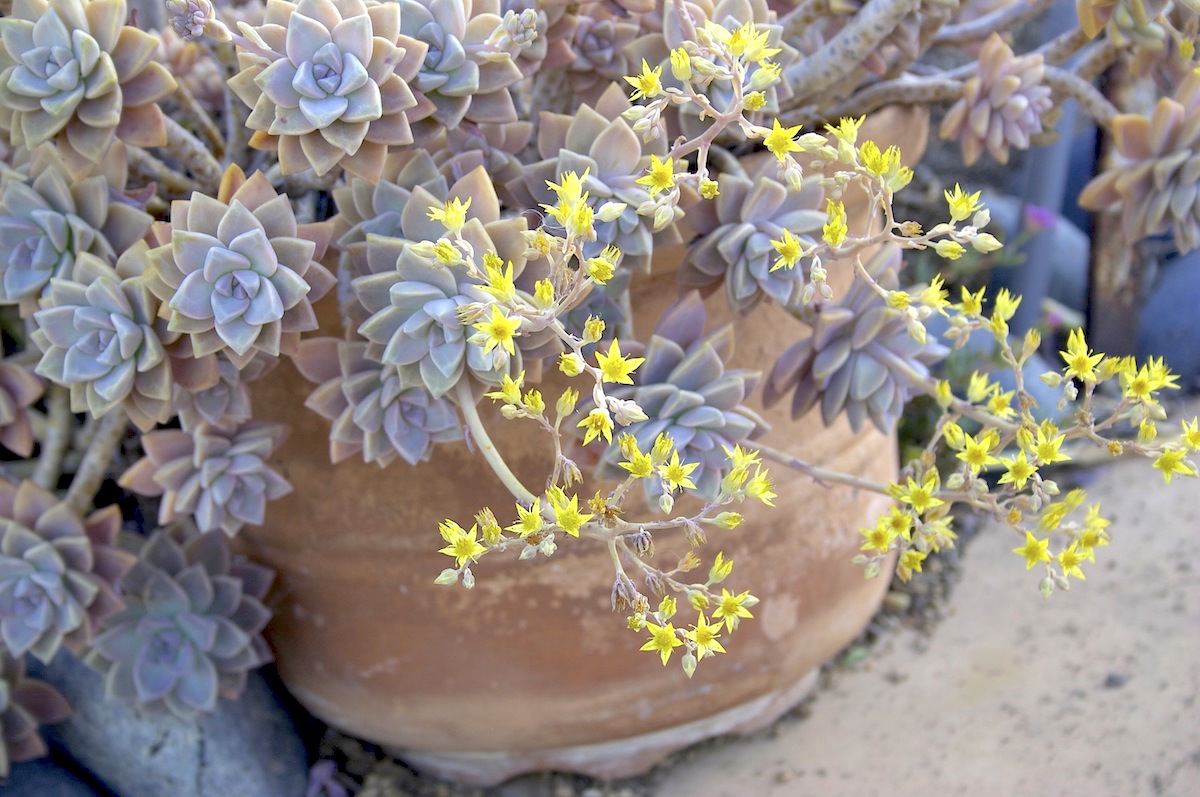
Graptopetalum paraguayense in bloom
Graptopetalums bloom in spring, producing dainty sprays of star-shaped flowers on stems that grow toward greatest sun. They're pretty and attract hummingbirds, but cutting them off helps preserve the vitality of the plant (and as cut flowers, they're long-lasting).

Leaves are capable of producing baby plants, roots and all. These are in a nursery flat lined with a paper towel.
Handle with care
Like pachyphytums and large-leaved sedums, graptopetalums have leaves that pop off easily. I wince when I hear that little snap. All parts of the plant are fairly brittle because it wants to break apart and reroot.
No surprise, these are among the easiest succulents to propagate. Leaves that land on the ground below the mother plant may sprout beadlike leaves and threadlike roots from the stem end. These feed off the leaf, draining it of nutrients. As the tiny plant grows, the leaf shrivels. If you have orphan leaves, set them atop soil out of direct sun. Don't bury or water them or they may rot.
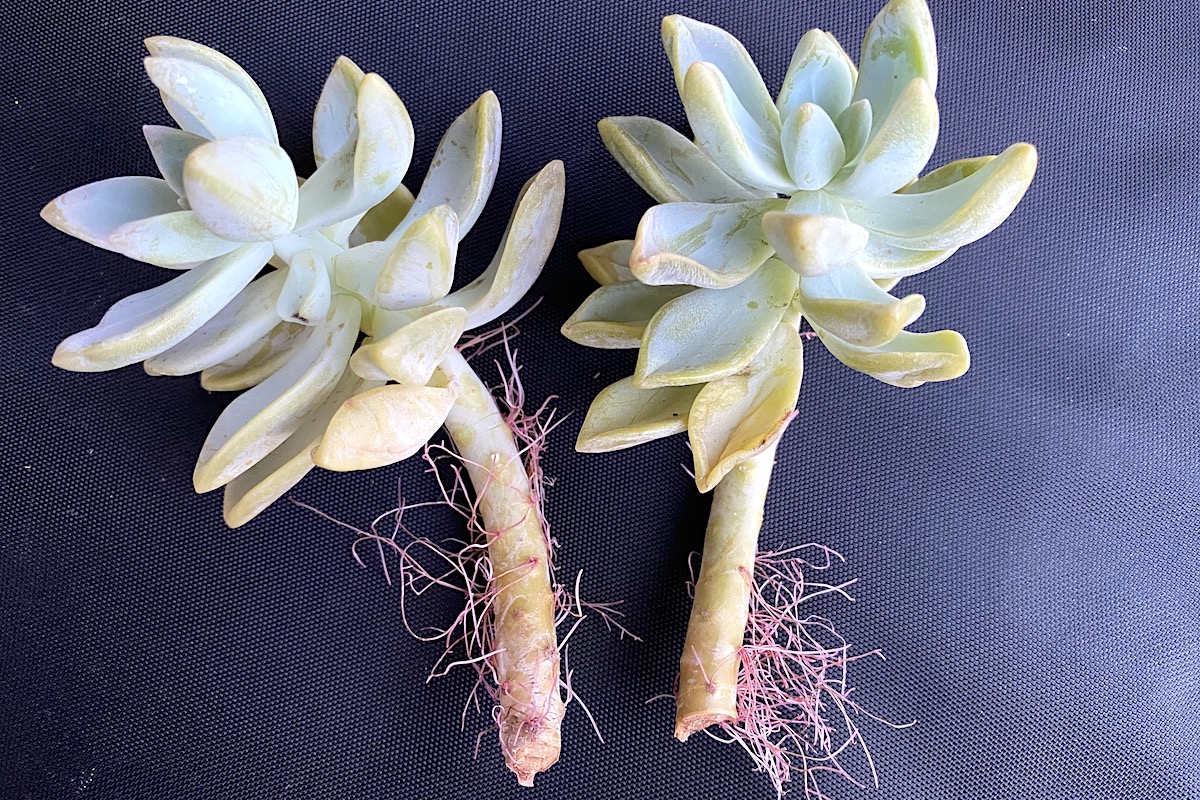
Graptopetalum cuttings sprout aerial roots where leaves once were attached.
Pendant graptopetalums (like sedums, echeverias, crassulas and other stem succulents) may become bearded with roots as they seek soil in which to root. Tuck cuttings into niches in rock walls and let the plants cascade from terraces, pedestal pots and hanging baskets.
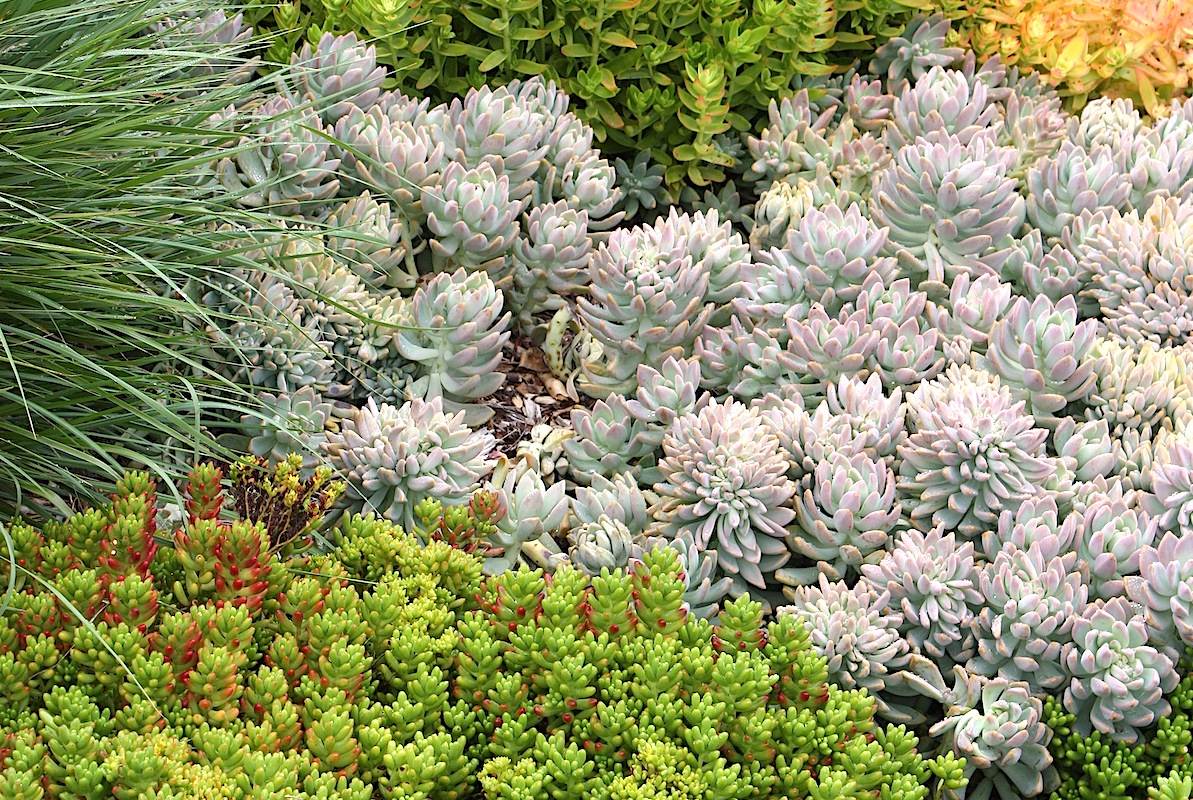
Crested graptopetalums grow alongside Sedum rubrotinctum (foreground)
Graptopetalums can be used as a ground cover, but like all succulents, they can’t be walked on. As in the photo above, they also may be crested (leaves form tight clusters).
Intergeneric crosses
The genus Graptopetalum can be crossed with Sedum and Echeveria; such hybrids are "intergeneric crosses." Named cultivars exhibit the best of both genera and benefit from hybrid vigor. Graptopetalum + Echeveria = Graptoveria, and Graptopetalum + Sedum = Graptosedum.

Graptoveria 'Fred Ives'
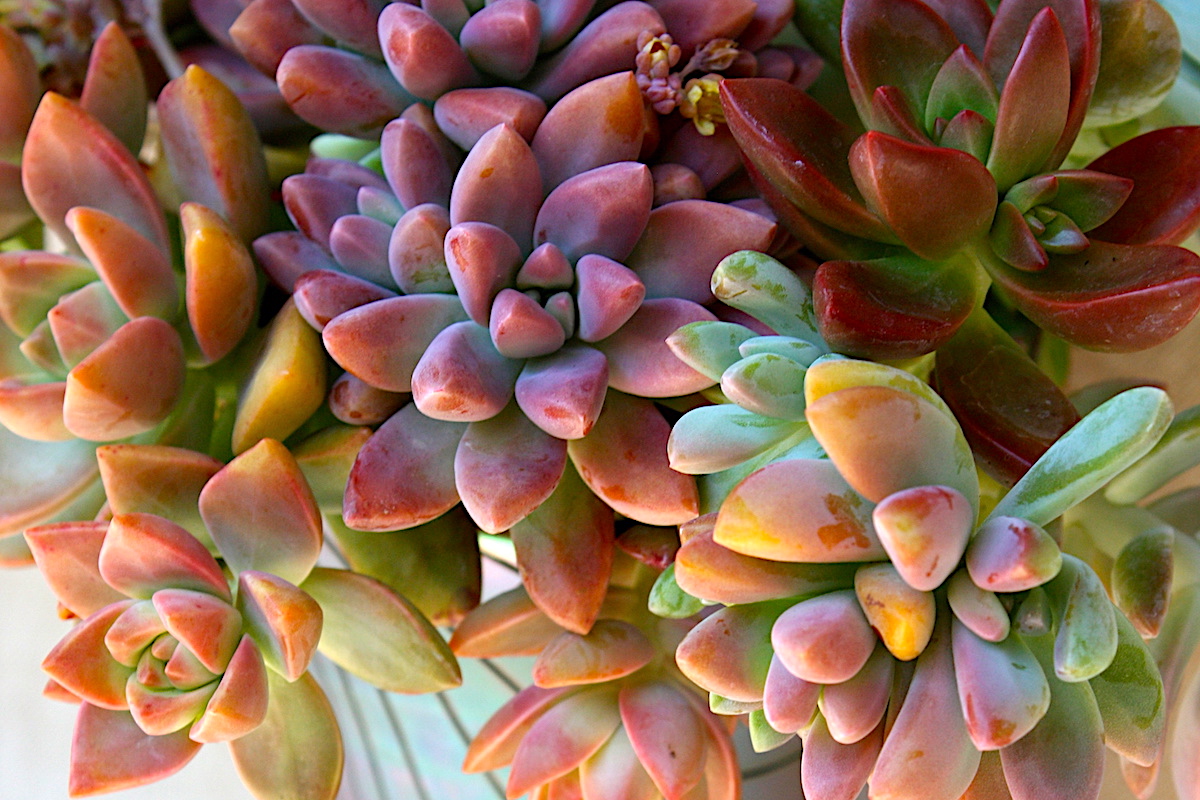
Graptosedum cultivars
Take and start cuttings
As days shorten and summer heat abates, tidy your graptopetalums and other leggy succulents. In autumn, an overgrown plant's exposed inner areas and raw cut branches are less vulnerable to sunburn and desiccation. Use trimmings to start new plants. Don't expect much top growth during winter, but rest assured, roots are spreading and getting ready to fuel spring growth.
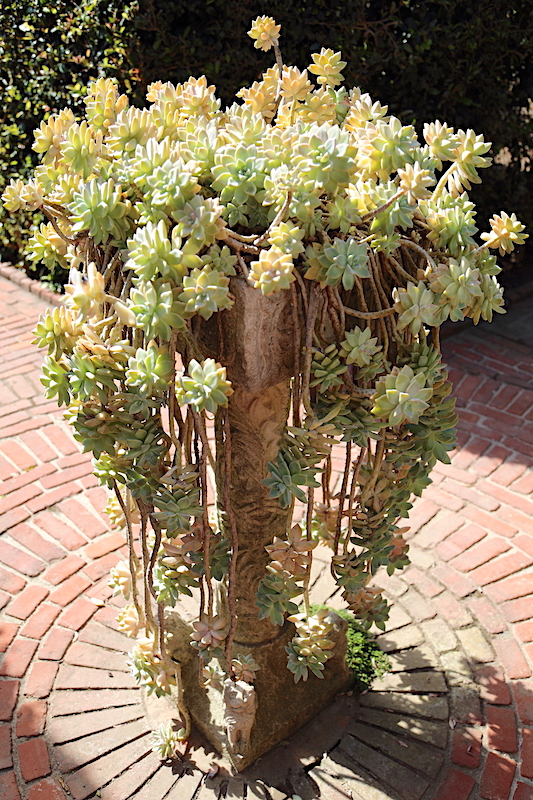
Inspired by this pedestal pot at Lotusland, I planted a 20-inch-tall, vase-shaped terra-cotta pot (below) with graptopetalum cuttings.
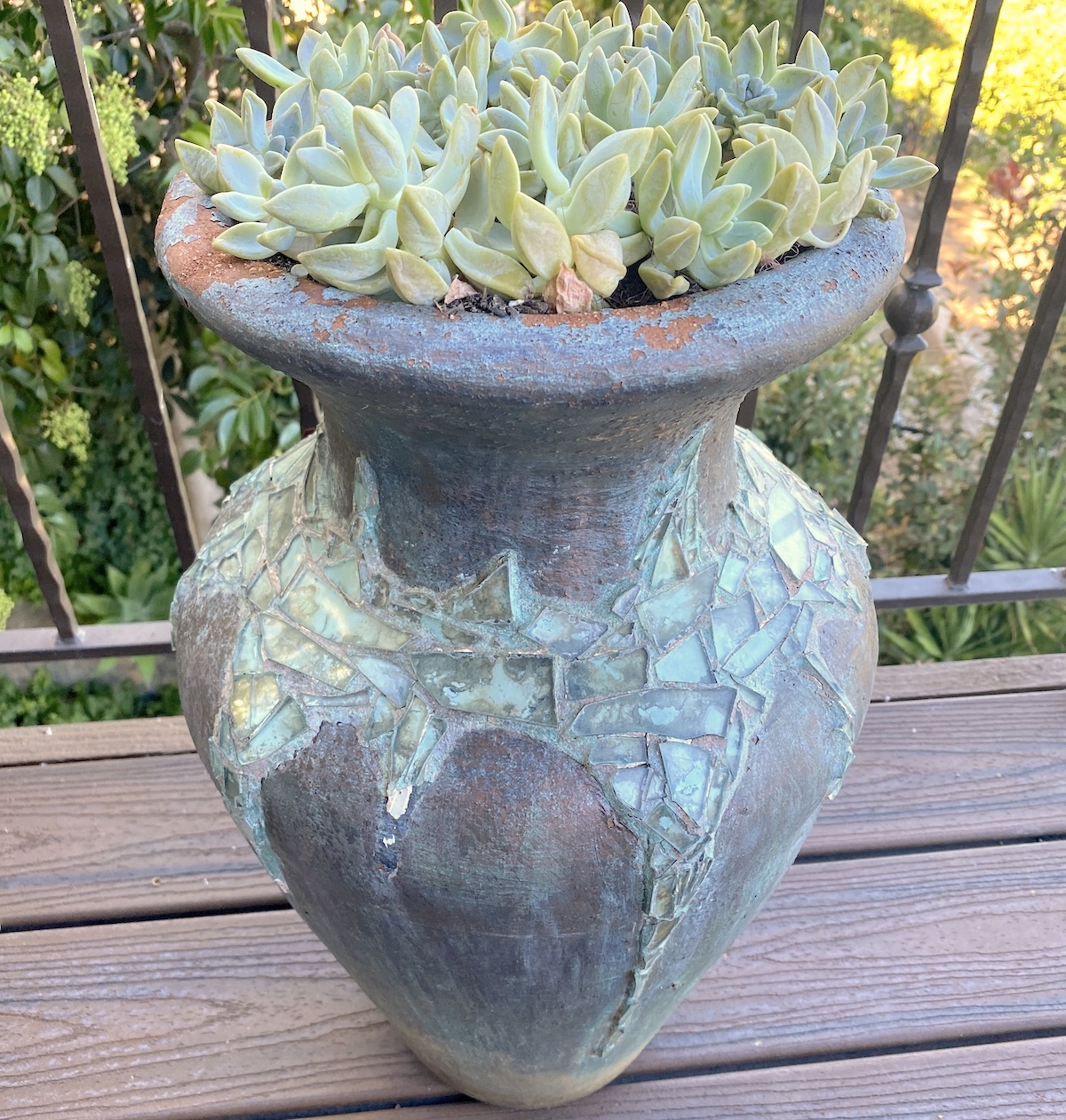
Graptopetalum cuttings newly planted

Here's the cache pot I placed inside the larger pot (above).
In their new home, my graptos will cascade, lengthen and branch. When I tire of them or they get untidy, I'll snip off the tip rosettes and start them over again as cuttings...or pass them along to neighbors and friends.
Btw, after you’ve grown Graptopetalum paraguayense for awhile, you too will have loads of it.
And in the category: "I would if I could"
A Newport Beach, CA, floral designer ornamented his home's Art Nouveau architecture with cast-concrete graptopetalums (below).

Cast-concrete graptopetalums
see my Graptopetalums at lotusland video
Related info on this site
Plant a Pot with Colorful Rosette Succulents
It’s easy to plant a pot with colorful rosette succulents that makes people gasp when they see it. A sure-fire way to make one appealing is to combine succulents that are similar yet different
Succulents with Fibonacci Spirals
Many cacti and succulents form geometric spirals similar to those of sunflowers, pine cones and nautilus shells. Spiral leaf arrangements funnel rainwater to roots and keep leaves from shading each other.
The post Graptopetalums: Lovely, Easy-Grow Succulents appeared first on Debra Lee Baldwin. Copyright © Debra Lee Baldwin.
from Debra Lee Baldwin https://ift.tt/aTBZrSR
via IFTTT

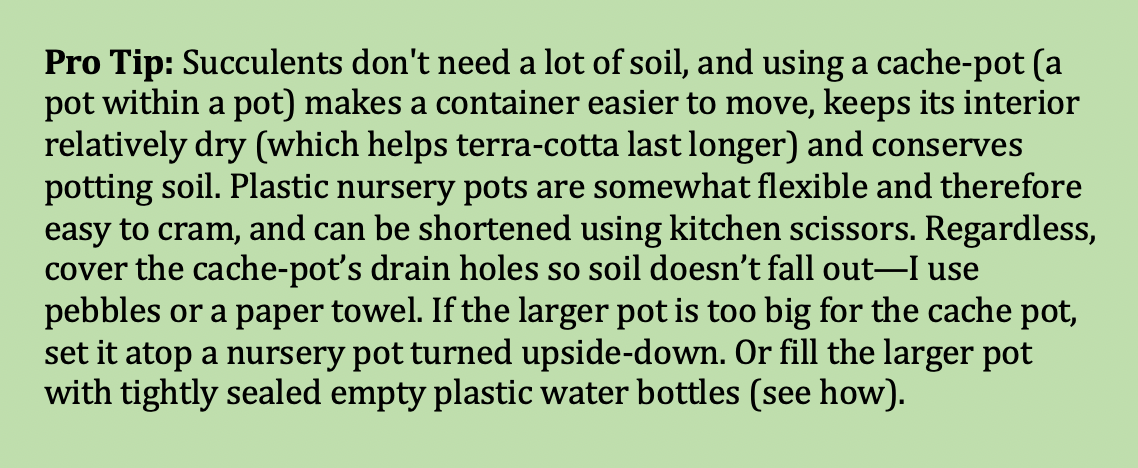
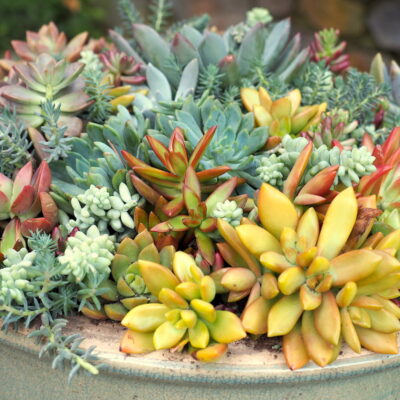

No hay comentarios:
Publicar un comentario